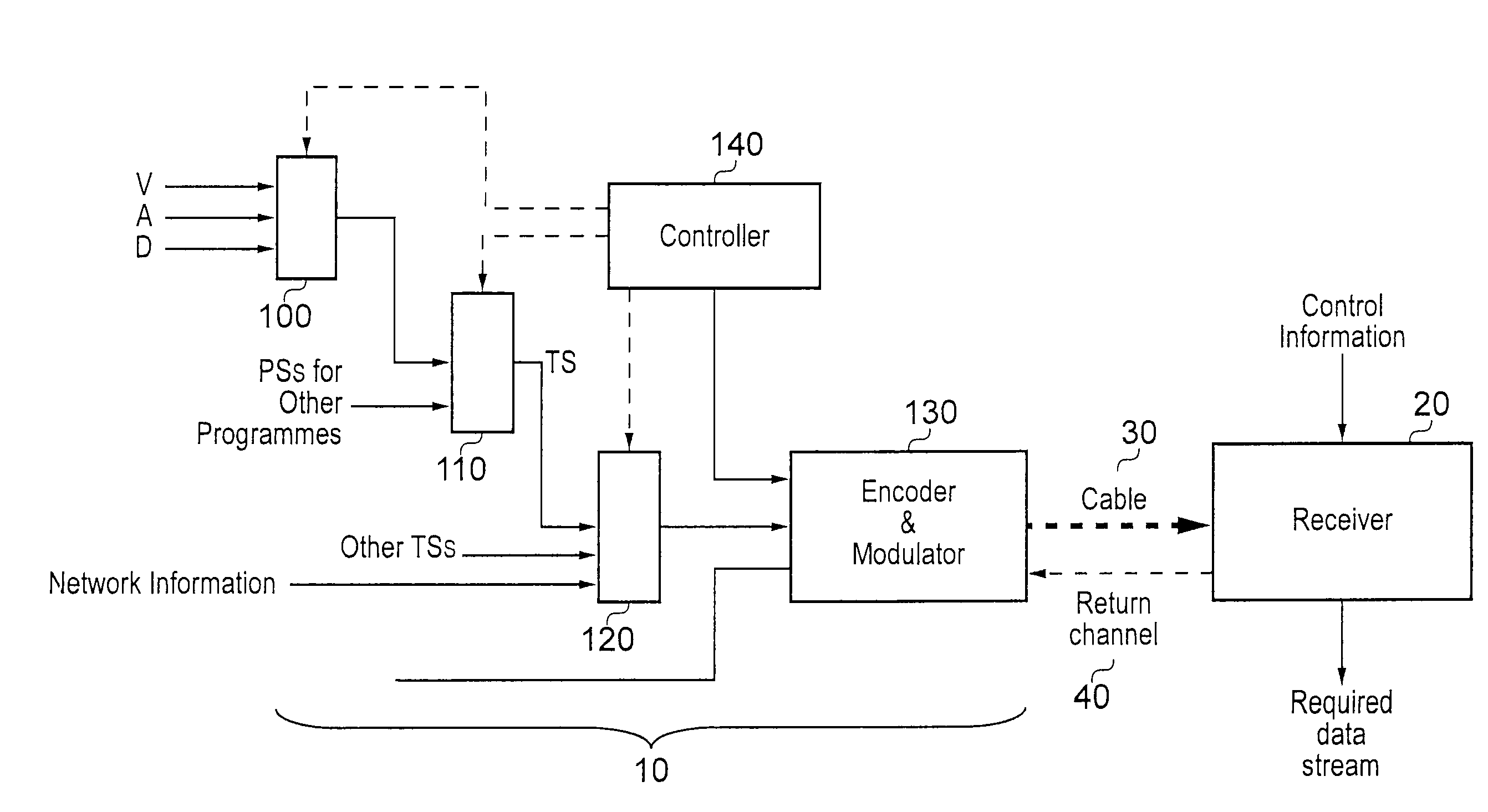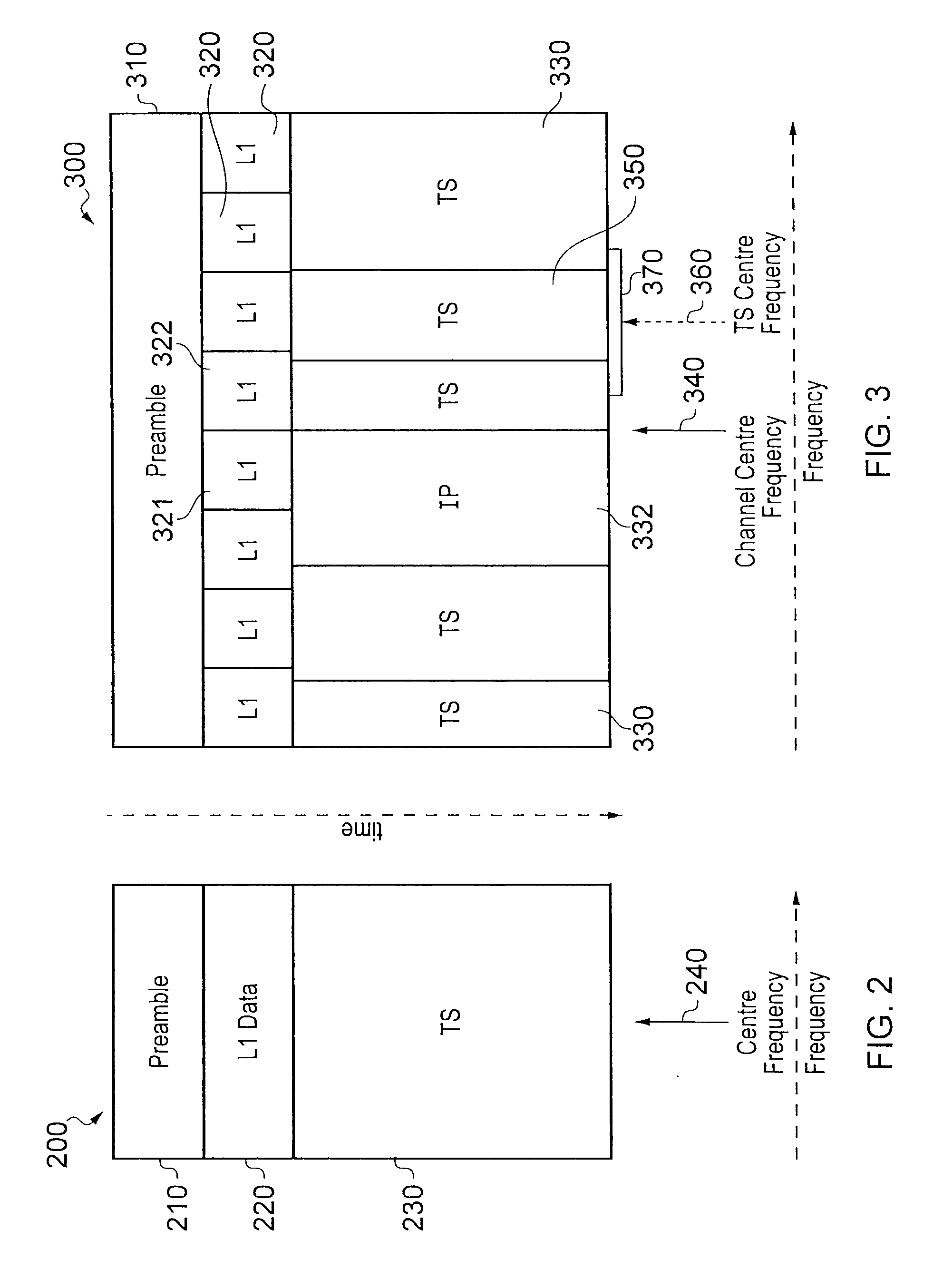Digital signal transmission and reception
a digital signal and reception technology, applied in the field of digital signal transmission and reception, can solve problems such as imposing pressure on the digital payload carried by each channel
- Summary
- Abstract
- Description
- Claims
- Application Information
AI Technical Summary
Benefits of technology
Problems solved by technology
Method used
Image
Examples
Embodiment Construction
[0021]Referring now to FIG. 1, a digital signal transmission system comprises a transmitter 10 and a receiver 20, linked by a transmission link 30. In this example, the transmission link is a wired link (which term encompasses electrically conductive wires and optical fibres), and the system of FIG. 1 is arranged to provide a cable television service. In general terms, except where differences are described, the apparatus operates in accordance with the DVB-C standards.
[0022]An optional return channel 40, by which data such as purchasing data or viewing statistics can be carried from the receiver to the transmitter, is also provided. The return channel is conventional and will not be described further here.
[0023]The present techniques are not limited to cable systems. Corresponding techniques may be used in other transmission systems such as terrestrial or satellite systems.
[0024]The transmitter comprises a number of programme multiplexers 100, one for each programme data stream to ...
PUM
 Login to View More
Login to View More Abstract
Description
Claims
Application Information
 Login to View More
Login to View More - R&D
- Intellectual Property
- Life Sciences
- Materials
- Tech Scout
- Unparalleled Data Quality
- Higher Quality Content
- 60% Fewer Hallucinations
Browse by: Latest US Patents, China's latest patents, Technical Efficacy Thesaurus, Application Domain, Technology Topic, Popular Technical Reports.
© 2025 PatSnap. All rights reserved.Legal|Privacy policy|Modern Slavery Act Transparency Statement|Sitemap|About US| Contact US: help@patsnap.com



